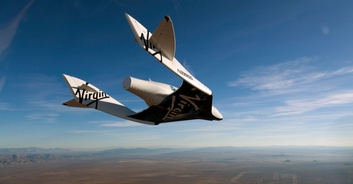Air travel as we know it could be changed forever by the arrival of a new aeroplane design called the Flying-V.
The Flying-V has the same wingspan as existing planes but can carry a total of 314 passengers. It allegedly burns 20 per cent less fuel than traditional jets.
Funded by Dutch airline KLM, the concept craft is named after the iconic Gibson Flying-V electric guitar which has been used by many legendary players over the years, including Eddie Van Halen, Jimi Hendrix and Keith Richards.

Its unusual V-shape comes from the aircraft widening diagonally backwards from its nose and it is believed its wings would host the passenger space, cargo hold, fuel tanks and all other infrastructure.
The Flying-V design was conceived by Justus Benad, a student at the Technical University of Berlin at the time, and was further developed by researchers at the Delft University of Technology in the Netherlands.
In a recent statement, CEO and president of KLM Pieter Elbers named the airline a "pioneer" and expressed hope that sustainable aviation would take off in the future.

"In recent years, KLM has developed as a pioneer in sustainability within the airline industry," he said. "We are proud of our progressive cooperative relationship with TU Delft, which ties in well with KLM’s strategy and serves as an important milestone for us on the road to scaling-up sustainable aviation."
Speaking to CNN, project leader Roelof Vos claimed such innovation was called for, saying: "The industry is still growing, so we really need to look at more sustainable airplanes. We cannot simply electrify the whole fleet, as electrified airplanes become way too heavy and you can’t fly people across the Atlantic on electric airplanes - not now, not in 30 years.
"So we have to come up with new technologies that reduce fuel burn in a different way. We’ve been flying these tube and wing airplanes for decades now, but it seems like the configuration is reaching a plateau in terms of energy efficiency."

He added: "The new configuration that we propose realizes some synergy between the fuselage and the wing. The fuselage actively contributes to the lift of the airplane, and creates less aerodynamic drag."
Researchers hope to fly a scale model of the Flying-V this September, while a mock-up of the new cabin design will be open to the public at Amsterdam's Schiphol airport in October. The completed plane is expected to enter service between 2040 and 2050.


